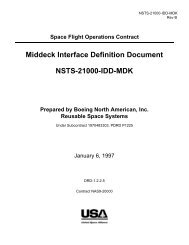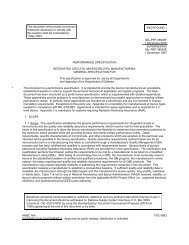Crystal Growth Mineral Formation & Stability Gibbs Free Energy ...
Crystal Growth Mineral Formation & Stability Gibbs Free Energy ...
Crystal Growth Mineral Formation & Stability Gibbs Free Energy ...
You also want an ePaper? Increase the reach of your titles
YUMPU automatically turns print PDFs into web optimized ePapers that Google loves.
http://www.brocku.ca/earthsciences/people/gfinn/petrology/ab-an2.gif<br />
Nucleation<br />
EQ xtalization -><br />
final xtal comp =<br />
starting L comp<br />
E. Goeke, Fall 2006<br />
• For minerals to nucleate, the new cluster of atoms/ions<br />
must have a lower ΔG then the other phases in the system<br />
(e.g. melt, aqueous solution, other minerals)<br />
• Whether or not a mineral will nucleate will depend on P, T,<br />
and chemical composition of the system<br />
• Size of nucleus will determine whether the new mineral<br />
will grow in size or dissolve<br />
– Greater surface energy = less stable<br />
– Small xtals have a high surface area to volume ratio<br />
S.A. = 6 * 2 * side length<br />
V = (side length) 3<br />
http://www.tulane.edu/~sanelson/eens212/metamorphreact.htm<br />
S.A. = 6 * 2 * 5<br />
V = 5 3<br />
S.A./V = 60/125<br />
S.A. = 6 * 2 * 1<br />
V = 1 3<br />
S.A./V = 12/1<br />
E. Goeke, Fall 2006<br />
E. Goeke, Fall 2006<br />
http://www.brocku.ca/earthsciences/people/gfinn/petrology/ab-an3.gif<br />
– T d = melt has an equal<br />
ΔG to the xtal, so if<br />
nuclei form, the high<br />
surface energy causes the<br />
xtals to simply dissolve<br />
back into the melt<br />
– T a = xtals have a slightly<br />
lower ΔG than the melt,<br />
but nuclei must be above<br />
a critical size in order to<br />
avoid being resorbed;<br />
only a small number of<br />
nuclei are present & grow<br />
– T b = xtals have a<br />
significantly lower ΔG<br />
than the melt, so many<br />
nuclei form & grow<br />
fractional<br />
xtalization -><br />
final xtal comp ≠<br />
starting L comp<br />
E. Goeke, Fall 2006<br />
Winter, 2001, An Introduction to Igneous & Metamorphic Geology<br />
Heterogeneous Nucleation<br />
• Heterogeneous nucleation occurs by a new xtal taking<br />
advantage of a pre-existing surface or flaw to nucleate<br />
– Largely eliminates the need for seed nuclei<br />
– Reduces surface energy problems<br />
• Can occur on:<br />
– Specific crystallographic faces of a pre-existing xtal =<br />
epitaxial nucleation<br />
– On a structural defect such as as grain boundary or<br />
another imperfection, where the surface energy was<br />
higher for the original xtal but the new nucleation<br />
lowers the surface energy<br />
E. Goeke, Fall 2006<br />
E. Goeke, Fall 2006, 12:041 <strong>Mineral</strong>ogy 4<br />
T d<br />
E. Goeke, Fall 2006
















